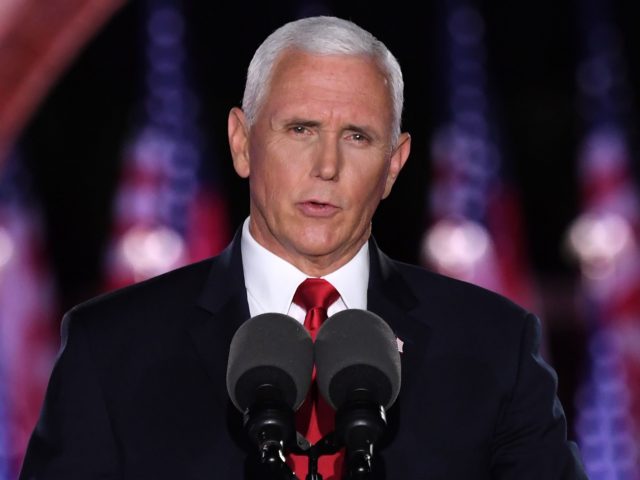CLAIM: President Donald Trump imposed the China travel ban before the first coronavirus case spread within the U.S.
VERDICT: MOSTLY TRUE. The first known non-travel spread happened in mid-February; the travel ban was Jan. 31.
Vice President Mike Pence addressed the Republican National Convention (RNC) on Wednesday evening. Among other achievements, he listed President Trump’s leadership on the coronavirus, and said: “Before the first case of coronavirus spread within the United States, President Trump took the unprecedented step of suspending all travel from China.”
That is probably true, though it is impossible to know with certainty, because there could have been asymptomatic cases. There are also questions about whether the virus may have spread to the U.S. earlier than it was detected in January. The first known case arrived from China on January 15, and the Centers for Disease Control and Prevention (CDC) detected the first known community transmission case on February 26.
The CDC reported in June:
From January 21 through February 23, 2020, public health agencies detected 14 U.S. cases of coronavirus disease 2019 (COVID-19), all related to travel from China (1,2). The first nontravel–related U.S. case was confirmed on February 26 in a California resident who had become ill on February 13 (3). Two days later, on February 28, a second nontravel–related case was confirmed in the state of Washington (4,5). Examination of four lines of evidence provides insight into the timing of introduction and early transmission of SARS-CoV-2, the virus that causes COVID-19, into the United States before the detection of these two cases. First, syndromic surveillance based on emergency department records from counties affected early by the pandemic did not show an increase in visits for COVID-19–like illness before February 28. Second, retrospective SARS-CoV-2 testing of approximately 11,000 respiratory specimens from several U.S. locations beginning January 1 identified no positive results before February 20. Third, analysis of viral RNA sequences from early cases suggested that a single lineage of virus imported directly or indirectly from China began circulating in the United States between January 18 and February 9, followed by several SARS-CoV-2 importations from Europe. Finally, the occurrence of three cases, one in a California resident who died on February 6, a second in another resident of the same county who died February 17, and a third in an unidentified passenger or crew member aboard a Pacific cruise ship that left San Francisco on February 11, confirms cryptic circulation of the virus by early February. These data indicate that sustained, community transmission had begun before detection of the first two nontravel–related U.S. cases, likely resulting from the importation of a single lineage of virus from China in late January or early February, followed by several importations from Europe. The widespread emergence of COVID-19 throughout the United States after February highlights the importance of robust public health systems to respond rapidly to emerging infectious threats.
At the time Trump imposed the travel ban on China, former Vice President Joe Biden called it “hysterical xenophobia.” Two months later, Biden changed his mind.
Trump imposed the ban when there were fewer than ten cases and no deaths, buying time and saving lives, as Dr. Anthony Fauci has testified.
Joel B. Pollak is Senior Editor-at-Large at Breitbart News and the host of Breitbart News Sunday on Sirius XM Patriot on Sunday evenings from 7 p.m. to 10 p.m. ET (4 p.m. to 7 p.m. PT). His new book, RED NOVEMBER, tells the story of the 2020 Democratic presidential primary from a conservative perspective. He is a winner of the 2018 Robert Novak Journalism Alumni Fellowship. Follow him on Twitter at @joelpollak.

COMMENTS
Please let us know if you're having issues with commenting.